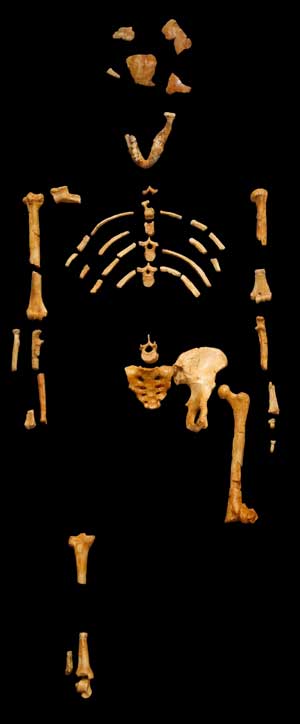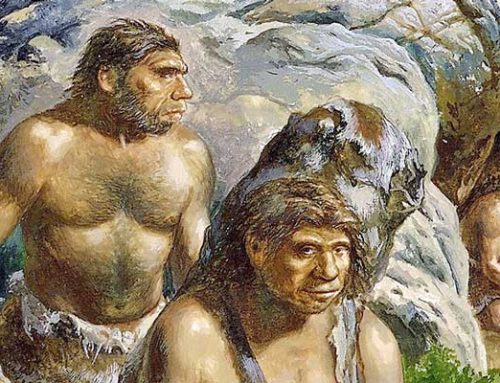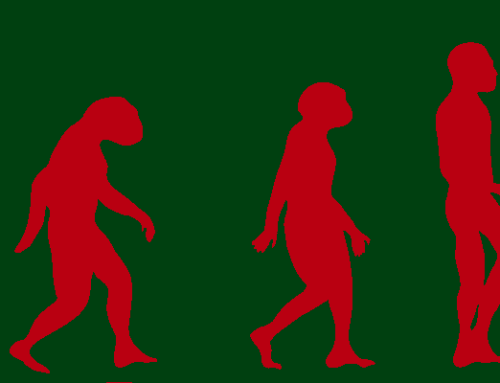Lucy – the Oldest Hominid Fossil
Don Johanson changed a great deal of what we know about evolution when he uncovered approximately 40% of the skeletal remains of one of the oldest hominids in the fossil record. Hominids are the family of mankind and their ancestors. Johansen nicknamed his find “Lucy,” after “Lucy in the Sky with Diamonds,” a song by the Beatles.
Johansen was able to find Lucy because of a lucky occurrence that was not very lucky for Lucy. Lucy apparently became entangled while walking near stream about 3.2 million years ago. She fell into the water and drowned. Her body sank into the mud and her flesh slowly decomposed. Over a long period of time, minerals from the water replaced the calcium in her bones and the bones became stones. In time, the swampy marshland turned to desert. In 1974, Johansen happened to be in the exact spot of East Africa where rainwater washed away the dirt from the now long-dried lake, and brought Lucy’s remains to the surface.
Lucy’s brain was about one-third the size of the brain of a human, but Lucy had a human-like characteristic: her knee could lock, so she could stand up straight. Other apes did not have a locking knee, so they could not stand for long periods of time. Johansen deduced that the locking knee gave Lucy and others like her an advantage over other apes.
Until Johanson’s find, archaeologists believed that apes grew smarter, then learned to walk upright. We now know that hominid brains grew larger only after they gained this small advantage over other animals. Don Johanson’s discovery of the remains of Lucy is an example of how scientific theories change over time.
Resources
Download this lesson as Microsoft Word file or as an Adobe Acrobat file.
Listen as Mr. Dowling reads this lesson.
Mr. Donn has an excellent website that includes a section on Prehistory.

The Remains of Lucy. Johanson presumed there remains were of a female based on two bones which indicated the width of the pelvic opening.




